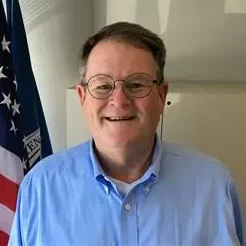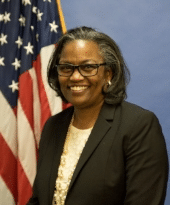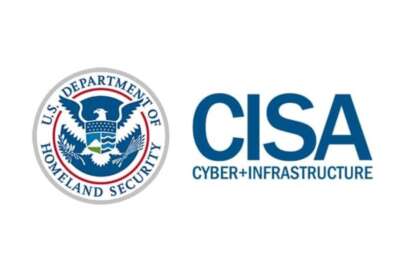People on the move: RRB CIO retires, IRS gets new CRO
White House’s Jake Braun and CISA’s Ross Foard are two more cyber leaders how who left federal service in the last month as the RRB is seeking a new CIO.
The federal fourth quarter kicked off less than a week ago and we are now just over halfway through the calendar year so it feels like a good time to catch up on some of the federal executives who have moved to new roles or retired recently.
There have been a lot of high profile cyber-related folks on the move recently with Chris DeRusha, the federal chief information security officer, leaving in May, and then Eric Goldstein, the executive assistant director for cybersecurity in the Cybersecurity and Infrastructure Security Agency in the Homeland Security Department, announcing his departure two days later.
While DeRusha landed at Google as its director of global public sector compliance, Goldstein waited until last week to announce his next job. He will be the managing vice president and head of cyber risk at Capital One.
“As with any role, transitions are essential. I’m thrilled that my dear friend Jeff Greene has stepped into the leadership seat for the Cybersecurity Division — there is no one better suited for the role,” Goldstein wrote on LinkedIn. “And I’m equally delighted to be starting the next phase in my journey at Capital One, where I’m joining an amazing team that is transforming the financial sector through innovation, scalable risk management, and a laser focus on customer experiences. I’m looking forward to new perspectives while continuing on our shared mission of keeping our country’s critical services safe and resilient against cyber risks.”
Greene came to CISA in May from the Aspen Institute where he was senior director for the cybersecurity program. Prior to that, he was the chief, of cyber response and policy at the White House’s National Security Council from 2021 to 2022. He also worked at the National Institute of Standards and Technology for five years, for Symantec and was a senior counsel for the Senate Homeland Security and Governmental Affairs Committee for three years.
Along with the top level changes in federal cybersecurity, two more cybersecurity executives headed out the door.
Ross Foard, as senior engineer in CISA’s cybersecurity division, retired after eight years at the agency where he lead efforts on identity security and helping to shape the continuous diagnostics and mitigation program.

“It was a rewarding experience over the last eight years, on par with the eight years I spent as a U.S. Navy submariner at the beginning of my career,” Foard wrote on LinkedIN. “I have been honored to serve as a subject expert and elevate identity and access management (IdAM) and cryptographic capabilities across the federal civilian executive branch (FCEB) and beyond.”
Among the areas Foard helped lead included serving as CISA’s CDM program lead engineer and architect for IdAM capabilities.
He said this helped the CDM program provide identity management and privileged management capabilities to the largest federal agencies and establish the ability to understand who authorized users were by creating a master user record at each agency.
Additionally, Foard served on the Federal Mobility Group (FMG) Mobile Security Working Group, where he helped demonstrate how mobile devices can serve as important and secure sources of identity and enable phishing-resistant authentication.
Finally, Foard highlighted his time as the co-chairman on the Federal CISO council’s ICAM subcommittee.
White House leaders heading back to academia
Jake Braun is a fourth federal cyber leader to move on over the last two months. Braun, the acting principal deputy national cyber director in the White House’s Office of the National Cyber Director, is returning to the University of Chicago where he is a lecturer and on the faculty of the Harris School of Public Policy.
Braun was the executive director of the cyber policy initiative from March 2018 to February 2021 where he joined DHS as a senior advisor to the Management Directorate, which oversees all operations for the department.
He has been working at ONCD since June 2023 as what some would call the functional chief operating officer for the office where he oversaw the implementation of the national cybersecurity strategy.
“Helping run a startup in the White House has been one of the best experiences of my professional career. ONCD has accomplished so much in such a short period of time,” Braun said in an email statement. “I can’t thank the team at ONCD — especially Director [Harry] Coker and Kemba Walden — as well as President [Joe] Biden enough for giving me this opportunity.”
At the recent AFCEA TechNet Cyber conference, Braun spoke about the changes to ONCD over the last year, including growing to almost 100 people.
“One of the main things we are doing, and we haven’t had this before where there is one agency or White House office like ourselves whose sole job is driving federal cohesion on cybersecurity. We do that through implementation of the national cyber strategy. Nearly every agency in the federal government has some aspect of cybersecurity tied to their part of the Implementation of the national cyber strategy,” Braun said.
In a statement, Coker praised Braun’s dedication and efforts to improve the nation’s cybersecurity posture.
“From the beginning of the Biden-Harris administration, and even earlier, Jake Braun has been a fierce advocate for our Nation’s cybersecurity. At every opportunity, I’ve seen Jake be a champion for the implementation of the National Cybersecurity Strategy, rallying ONCD and our mission partners to collaboratively focus on achieving meaningful outcomes. I am especially grateful for Jake’s advocacy and action on behalf of our nation’s critical infrastructure owners and operators, helping them learn about and take advantage of the resources wisely allocated through the President’s investing in America agenda,” Coker said. “Along the way, Jake repeatedly heard organizations tell us they need two things: resources and trained workers. In every meeting, in every engagement, his focus on having an impact for those on the front lines of our nation’s cybersecurity has been unwavering — that’s leadership. I personally am grateful to Jake for not only his incredible leadership while he’s been here at ONCD, but also his guidance and friendship.”
Outside of the cybersecurity realm, one other federal technology leadership retirement that is worth mentioning. Terryne Murphy, who had been the chief information officer of the Railroad Retirement Board since August 2019, retired after more than 35 years of federal service.

“To my leaders along the way, thank you — I learned so much from you. Thank you for every opportunity to stretch and to grow, for your counsel, your cover, and your patience while I learned to get better at leading/serving!” Murphy wrote on LinkedIN. “To my colleagues, teammates, and my classmates, thank you — I learned so much from you, too. Thank you for the challenges and the tough lessons to always strive to take the high road and to give back better than what we received! I did my best to serve you all well.”
Rich Kramer is the deputy CIO for the RRB, but it’s unclear if he stepped into the acting role with Murphy’s retirement.
Along with her time at RRB, Murphy also worked at the Commerce Department for 18 months serving as the acting CIO for seven of those months.
She began her career with the Army as a telecommunications officer and after nearly 12 years of service, Murphy joined the civilian sector working at the Justice Department, the Homeland Security Department and the Census Bureau.
Beyond these departures, there are several federal executives who have found new roles in government.
For starters, Mike Wetklow, the deputy CFO for the National Science Foundation for the last eight years, is taking a new job at the IRS as its chief risk officer.
“I am excited to join an organization dedicated to public service and to help drive innovation, leverage data, and improve compliance processes,” Wetklow wrote on LinkedIn. “Most importantly, I look forward to collaborating with the talented team at the IRS and contributing to an environment where we can all thrive.
Wetklow also worked at the Office of Management and Budget’s Office of Federal Financial Management for four years as a branch chief and previously worked at DHS and the Government Accountability Office.
He also was the co-chairman of the CFO Council’s working group on improving the federal financial management workforce.
New leaders at HHS, Air Force
A second federal executive heading into a new job is Melissa Bruce, who is taking over as the deputy assistant secretary for the Department of Health and Human Services Program Support Center (PSC).
She joins HHS PSC after spending the last four years working in the Treasury Department’s Special Inspector General for Troubled Asset Relief Program. (SIGTARP) office. Bruce has been acting IG for the last 2-plus years. Previously, she spent 10 years at DHS in the management directorate and worked in the private sector.
Bruce takes over PSC after several turbulent years, including the cut back of its assisted acquisition services and controversial treatment of its leadership.
Finally, Darek Kitlinski is the new chief technology officer for the Air Force’s Manpower, Personnel and Services (A1). He comes to the service after spending the last almost two years as the chief of the cloud services division for the Army’s Enterprise Cloud Management Agency.
In this new role, Kitlinski serves as the senior civilian advisor on cloud computing, computer systems and information technology.
Kitlinski also has been CTO for the Defense Technical Information Center (DTIC) and chief technology advisor for enterprise architecture, cloud, cyber and governance for the Coast Guard.
Copyright © 2024 Federal News Network. All rights reserved. This website is not intended for users located within the European Economic Area.
Jason Miller is executive editor of Federal News Network and directs news coverage on the people, policy and programs of the federal government.
Follow @jmillerWFED







